The particle accelerator and its functions
Hello everyone in Steemit, today I want to talk about the particle accelerator, a device that people know very little, but which is really interesting because in the issue of nuclear development and its application is very necessary, as in what health refers to, since linear particle accelerators are used in the treatment of cancer since they are used both in radiotherapy or in radiosurgery.
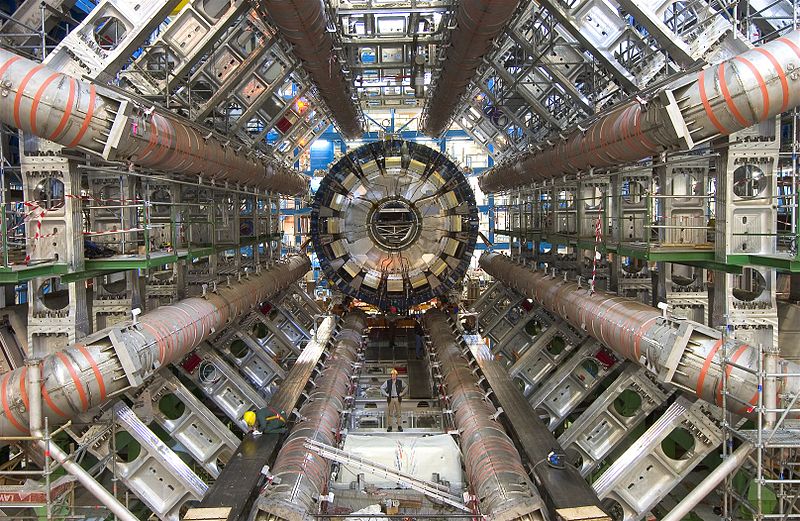
What is a Particle Accelerator?
Basically, a particle accelerator is an instrument in the form of tube or tunnel, serves to accelerate at high speed charged particles, using electromagnetic fields, so that they collide with other particles.
With the collision, new particles are generated, but these new particles are too unstable, disappearing in thousandths of a second. This shock that occurs in the particle accelerator, allows us to study the particles that collide with the new ones that are generated.

Types of particle accelerator
Linear Accelerators
A linear particle accelerator is a device that achieves a beam of charged particles to acquire a high kinetic energy. This is very useful because high-speed particle beams are used to investigate the subatomic structure of matter.
The foundation of the most basic accelerators is the same as that of the electron gun at one end of the cathode ray tube. That is, it consists of a more or less long tube in which the vacuum is made so that the accelerated particles can move without encountering obstacles. The particles are accelerated by the application of an electric field that occurs between two or more charged plates.
The more sophisticated high-energy accelerators can be schematized using the image above. The beam of charged particles passes successively through the interior of metal tubes of increasing length, A, B, C, D, E, ..., which are connected to an alternating voltage. To understand how the system works we assume that we want to accelerate a beam of positively charged particles. Then, when the beam is emitted, the first tube A has a negative charge and attracts it, producing an acceleration before the beam penetrates the tube.
When the beam travels inside the tube, it does so by passing right along its axis. The tube attracts it with the same electrical force in all directions and, therefore, does not change the trajectory of the beam. Just when said beam reaches the midpoint of tube A changes the direction of the current that feeds all the tubes, which causes tube A, which had a negative charge, to have a positive charge, tube B to become negatively charged, tube C positive, etc. In this way, when the beam leaves tube A, it is repelled by it and attracted by tube B, which implies that the beam is accelerated in its path from A to B. The same process is repeated at each stage, ie, when the beam reaches the middle of tube B, it changes its direction again. B happens to have a positive charge, and A and C have a negative charge again. Thus when the beam leaves the tube B, it is repelled by it and attracted by C, with which beam becomes accelerated again from B to C. And so on. Each new tube has a longer length than the previous one because the load of the tubes changes sign at equal time intervals (determined by the frequency of the alternating current that loads them) and in each new stage the beam travels at a higher speed.
Other types of linear accelerators
Cockroft-Walton linear particle accelerator
The main installations of accelerators, make use of several types of devices to accumulate the energy in the particles. The Cockroft-Walton accelerator is used as the first acceleration stage in the Fermilab. "Within this device, the hydrogen gas is ionized to create negative ions, each consisting of two electrons and one proton.The ions are accelerated by a positive voltage and reach an energy of 750,000 electron volts (750 keV). of 30 times the energy of the electron beam, in a television picture tube. " (Fermilab)
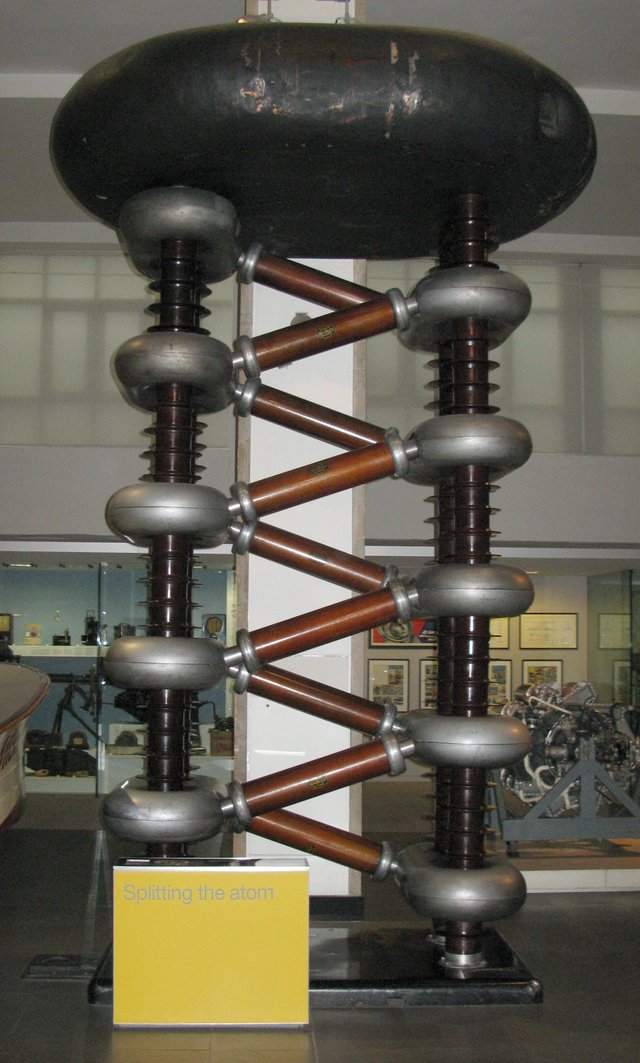
Cockroft and Walton were able to obtain throttle power, several hundred kilo-electron-volts. Its upper limit is about 1 MeV. The upper limit is imposed by the electric brake. To approach this limit, large and carefully designed insulators must be used, making this accelerator very voluminous.
Van de Graaf linear particle accelerator
Van de Graaff invented the generator that bears his name in 1931, with the purpose of producing a very high potential difference (of the order of 20 million volts) to accelerate charged particles that made themselves hit against fixed targets. The results of the collisions inform us of the characteristics of the nuclei of the material that constitutes the target.
The Van de Graaff generator is a constant current generator, while the battery is a constant voltage generator, what changes is the intensity depending on the devices that are connected.
The Van de Graaff generator is very simple, consisting of an engine, two pulleys, a belt or belt, two combs or terminals made of thin copper wires and a hollow sphere where the load carried by the belt accumulates.
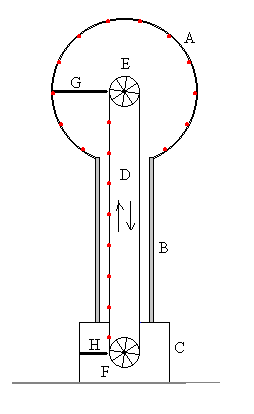.gif)
In the figure, a diagram of the Van de Graaff generator is shown. A hollow metallic conductor A of roughly spherical shape is supported by insulating plastic supports, screwed in a metallic foot C connected to earth. A (non-conductive) rubber belt or belt D moves between two pulleys E and F. The pulley F is driven by an electric motor.
Two combs G and H are made of very fine conductor threads, they are located at the height of the pulleys axis. The tips of the combs are very close but do not touch the tape.
The left branch of the conveyor belt moves upwards, transports a continuous flow of positive charge towards the hollow conductor A. When arriving at G and due to the property of the tips, a field is created that is sufficiently intense to ionize the air between the tip G and the tape. The ionized air provides the means for the charge to pass from the tape to the point G and then to the hollow conductor A, due to the property of the charges that are introduced inside a hollow conductor (Faraday's cuvette).
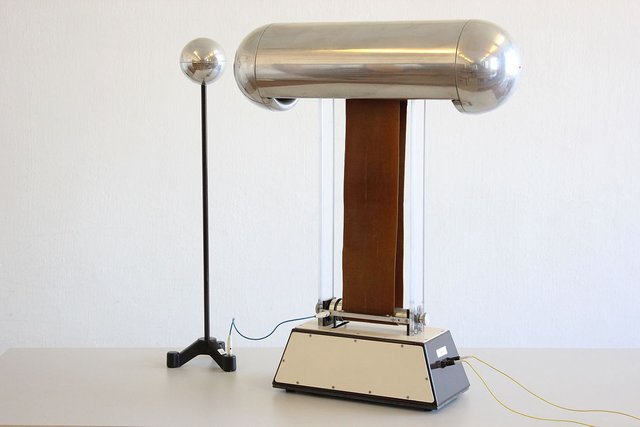
In this image, we can appreciate how the Van Graaf accelerator looks physically.
Circular Accelerators
A circular particle accelerator it is a type of particle accelerator in which they travel multiple times along a circular circuit. There are two variants of circular accelerators: the cyclotrons, which constitute the first built accelerator model, and the most modern synchrotrons, in which energies are reached in the TeV range, (Teraelectronvolt 10 raised to 12 eV) eV: is a unit of energy that represents the kinetic energy that an electron acquires when accelerated by a potential difference of 1 volt') inaccessible to linear accelerators.
These types of accelerators have an added advantage to the linear accelerators when using magnetic fields in combination with the electric ones, being able to achieve greater accelerations in smaller spaces. In addition, the particles can remain confined in certain configurations theoretically indefinitely, however, they have a limit to the energy that can be reached due to the synchrotron radiation emitted by the charged particles when accelerated. The emission of this radiation supposes a loss of energy, which is greater the greater the acceleration imparted to the particle. By forcing the particle to describe a circular path, what is actually done is to accelerate the particle, since the speed changes its direction, and in this way it is inevitable that it loses energy until equaling that which is supplied to it, reaching a maximum speed.
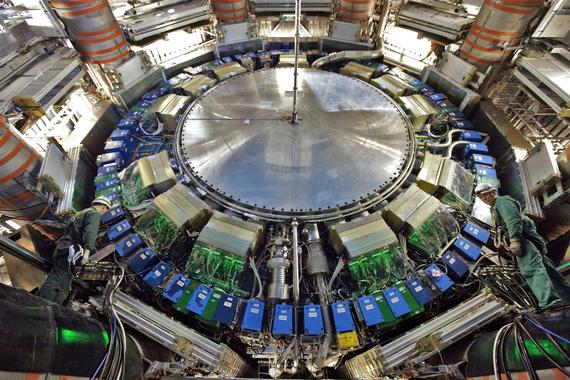
Types of circular particle accelerator
Cyclotron
A cyclotron is a type of accelerator of charged particles that combines the action of an alternating electric field, which provides them with successive impulses, with a uniform magnetic field that curves its trajectory and redirects them again and again towards the electric field. It was invented in 1934 by the American physicists Livingston (1905-1986) and Lawrence (1901-1958) (for this reason, the latter received the Nobel Prize in 1939).
The cyclotron consists of two hollow metal chambers in the shape of a semicircle (they are called "des", D, because of their shape), contained in a vacuum chamber so that the particles that travel through them are not dispersed in collisions with molecules of the gases that make up the air. A uniform and perpendicular magnetic field, generated by a powerful electromagnet, acts on the "des", and an alternating electric field is applied between them so that the electric force always acts in the direction of the movement of the particles. From an ion source, located near the center of the magnetic field, the charged particles are injected to the cyclotron initially at a moderate speed. The magnetic force gives them a normal acceleration and, therefore, they have a circular movement through one of the "des". When leaving there, the electric field that accelerates them is applied to the other half of the cyclotron at a higher speed. At that speed, they go through another semicircle of radius greater than the first and return to the area between the "des", where the electric field is applied again (now in the opposite direction to the previous one), which accelerates them again. The process is repeated again and again until the particles finally emerge from the cyclotron at a very high speed, after having performed within the order of 50 to 100 revolutions.
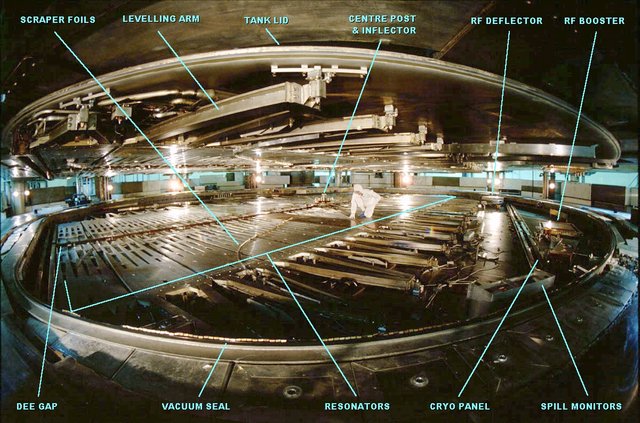
This picture shows how the cyclotron works
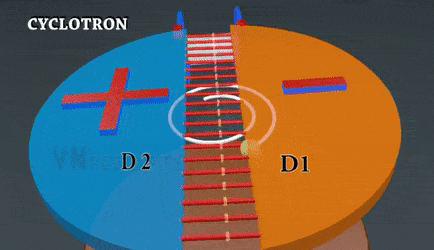
Synchrotron
It is a particle accelerator, designed in the form of a geometric top, which allows the increase of the kinetic energy of the electrons, conserving them in a circular path and, in turn, providing a new characteristic to the process. Its purpose is to analyze the nature of the matter. This machine was used at the beginning of the 20th century, and it acquired different forms and uses over time. It is comprised by a tube in which the vacuum was previously made in the form of a large ring, through which the positive and negative charge particles are transferred.
The design of the tube can be circular, straight or spiral, is surrounded by electromagnets that allow the particles to circulate through the center of the tube. These particles enter the tube, after being accelerated to several million electron volts. So that the molecules can be maintained in a constant orbit, they need to be accelerated at one or more points each time they turn around. The power of the electromagnets will increase as the particles reach the energy.
The synchrotron has various uses, some of them are: it contributes to advances in the fields of biology, pharmacology, nanotechnology. Improves the effectiveness of antibiotics. Contributes to the fight against dangerous viruses.
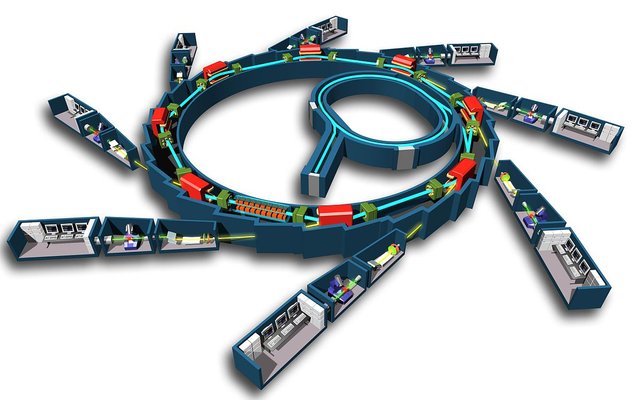
This picture shows how the synchrotron works
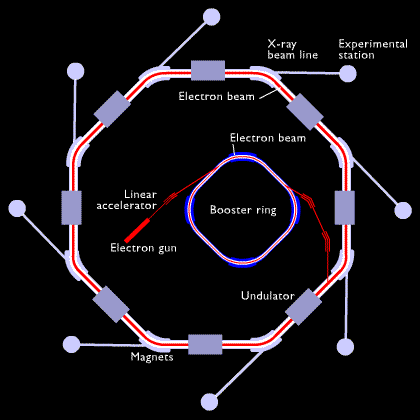
Thanks to all who read my post, I hope you like it.
For more information visit this pages:
https://okdiario.com/curiosidades/2017/11/22/acelerador-particulas-1539526
http://intercentres.edu.gva.es/iesleonardodavinci/Fisica/Electromagnetismo/Electromagnetismo08.htm
http://hyperphysics.phy-astr.gsu.edu/hbasees/Particles/accel2.html#c1